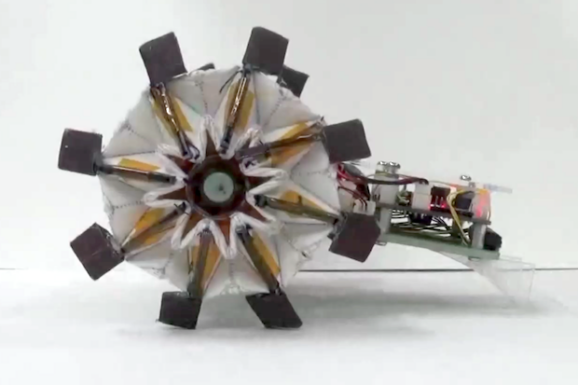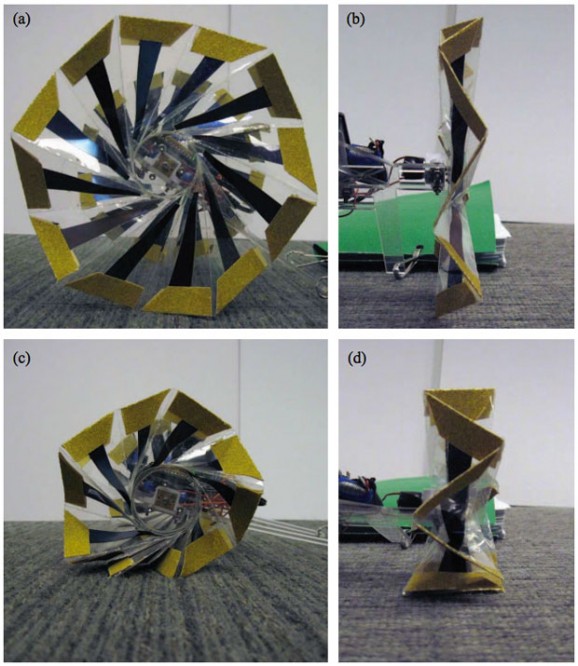These Robots Have Origami Wheels That Can Change Shape
This article is more than 2 years old
 I was never very good at making paper airplanes, but I’ve always had a thing for origami. My brain and my hands don’t seem to be naturally inclined toward the strategic folding of papers into three-dimensional shapes — although in elementary school I did master the art of making the fortune teller, otherwise known as the cootie catcher. Now that origami is being integrated into robotics, its geek cred has skyrocketed and I might need to give it another go.
I was never very good at making paper airplanes, but I’ve always had a thing for origami. My brain and my hands don’t seem to be naturally inclined toward the strategic folding of papers into three-dimensional shapes — although in elementary school I did master the art of making the fortune teller, otherwise known as the cootie catcher. Now that origami is being integrated into robotics, its geek cred has skyrocketed and I might need to give it another go.
It makes sense if you think about it. Turning two-dimensional materials into a three-dimensional shape that can actually do something is a process perfectly suited for robotics, particularly for their wheels, as demonstrated by a couple of research groups who presented at this month’s IEEE International Conference on Robotics and Automation.
The BioRobotics Laboratory at Seoul National University used the magic ball origami pattern, also known as a dragon’s egg, to design a robotic wheel. The magic ball can take on different shapes, and the researchers’ robotic wheel exploits that capability by increasing its diameter to 120 millimeters for better climbing traction, and decreasing its diameter to 55 millimeters to flatten down and gain access to tighter spaces.
The Harvard Microrobotics Lab collaborated with the Seoul National University researchers in another related project, this time involving origami wheels that can increase or decrease their size automatically. They wanted to move beyond simply going over or under objects — if a robot has a wheel that can change shape or “deform,” then it can exert different amounts of torque, which means the robot’s transmission can vary.

Transmission is what turns a motor’s power into speed and torque, and usually, vehicles have a lot of one but not the other (i.e., a low gear in a car provides torque but not speed, and a high gear increases the speed but loses torque). Because of this inverse relationship, most robot designers don’t bother with transmission, but the researchers use origami to create an autonomously varying transmission, which provides the best of both worlds when it comes to capabilities.
Origami wheels are cheaper and lighter than conventional wheels, and may be a very helpful in situations where space and mass are limited, such as robotic space missions.












